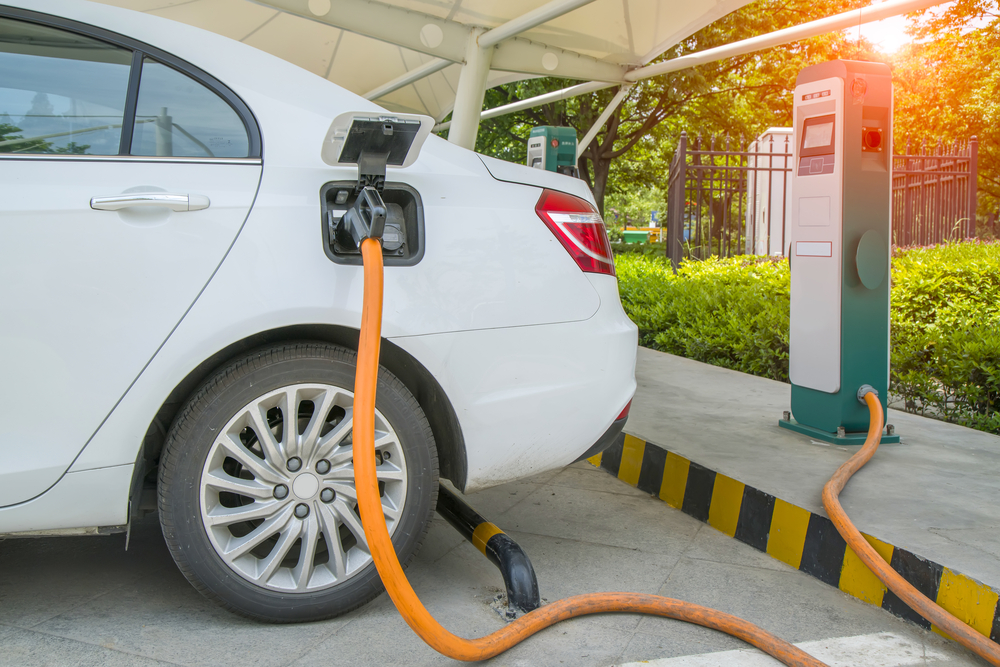New Jersey EV proposal looks to split investment between utilities and private entities

The New Jersey Board of Public Utilities (BPU) has released a proposal that is recommending how the state builds its electric transportation infrastructure.
The New Jersey Electric Vehicle Infrastructure Ecosystem 2020 Straw Proposal looks at who will be building the infrastructure, and subsequently who will pay to own and operate the network. The proposal suggests state electric utilities be responsible for the wiring and backbone infrastructure necessary to enable a robust number of Charger Ready locations, along with the ability to own and operate Electric Vehicle Service Equipment (EVSE) in specified circumstances. Non-utility entities would be responsible for installing, owning and/or operating, and marketing EVSE using private capital.
New Jersey electric utilities would also be responsible for maintaining the reliability of the local grid, even with the additional stress an EV infrastructure would add to it.
“A lack of charging infrastructure is a major impediment to EV adoption and a market barrier for private investment in charging,” said Michael Jennings, communications lead for Public Service Electric & Gas with PSEG. “Expanding access to charging infrastructure is key to electrifying the transportation sector, which would improve air quality, reduce greenhouse gas emissions and help New Jersey achieve the clean energy goals.”
New Jersey’s goal is to cut carbon dioxide emissions by 80 percent between 2006 and 2050, as well as having 330,000 EVs on the road by 2025 and two million by 2035.
In January 2020, New Jersey Gov. Phil Murphy signed a law that sets EV-specific goals requiring publicly accessible charging infrastructure, including installing at least 400 DC fast chargers and 1,000 Level Two chargers by 2025. The DC fast chargers are to be spread across 200 locations, many at travel corridors or community locations. Those located at travel corridors must be capable of delivering 150 kW of power, no more than 25 miles apart, and those located at community locations must be able to deliver at least 50 kW of charging power, but there is still a preference for 150 kW charging when possible.
In the straw proposal, New Jersey found that the state “cannot meet its ambitious clean energy goals or its 80 percent reduction below 2006 levels in CO2 emissions by 2050 unless it can electrify its transportation section” and electrifying vehicles in the state will reduce the cost of meeting New Jersey’s 2050 targets.
New Jersey has set a framework to meet its goals, including attracting private capital into the EV infrastructure sector and using shareholder dollars instead of ratepayer capital whenever possible, in order to minimize any risk of ratepayers paying for stranded EV infrastructure investments. The aim is to design EV infrastructure to be beneficial to both EV owners and non-EV owners.
“Utilities are uniquely positioned to support universal charging access, particularly in areas not served by private investors,” Jennings explained. “Meeting New Jersey’s targets for the expansion of charging infrastructure will require a comprehensive approach that includes both private market and utility investment.”
The New Jersey BPU held a stakeholder webinar this week to discuss the proposal, including how to best expand the EVSE infrastructure and encourage Charger Ready investment, how to ensure equity in the EV ecosystem, and how to design and integrate EV charging into the rate structure.
Many of the speakers agreed that rate design will be an important factor for creating the right processes for EVs in the state.
Stephanie Greene, a principal at the Rocky Mountain Institute, said not only is rate design important for EV implementation but “rate design is crucial to meeting current climate goals.” She said that 80 percent of EV charging in New Jersey happens at home. When looking at rate design, her suggestions were that rates should make EVs affordable, less than the cost of gasoline; rates should be simple; charging should be profitable to be sustainable; and tariffs should be time-varying.
Carine Dumit with EVgo added that the company has found that keeping their rates simple is the best way to help customers. “Do not overengineer or create complex structures to confuse or disincentivize customers,” she said, and “allow for runway in the short and medium-term that set all stakeholders on the path to meeting objectives.”
Commercial charging will also be an important factor for EV adoption in New Jersey. Xcel Energy experienced a learning curve in Colorado, and Dumit hopes New Jersey will learn from that company’s experiences. The utility found that “new rates for commercials EVs and fleets reduced demand charges, which were making electric buses 60 percent more expensive for RTD to operate than diesel.”
For commercial EV rates, Patrick Bean, global charging policy lead at Tesla, recommended clear rate options, available to all non-residential accounts; minimizing the use of non-coincident demand charges; utilizing time-of-use volumetric components, and avoiding short-term incentive rates.
The BPU will continue to take written comments until June 17.
